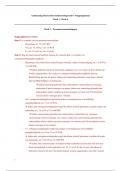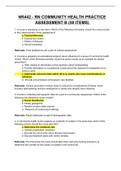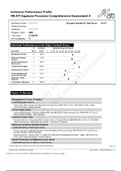Essay
Unit 12 Assignment 1 Technical Support (Distinction)
- Institution
- PEARSON (PEARSON)
This document is a very detailed document of the Unit 12 – IT Technical support and management first assignment. This document is a distinction standard grade and each grade level is separated. The grades pass, merit and distinction are met within this 4059 words assignment.
[Show more]










